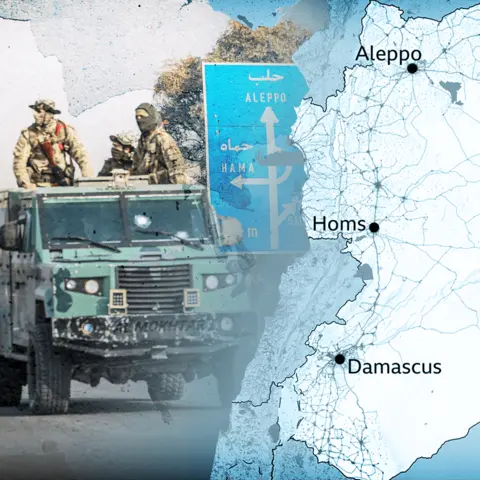 BBC
BBCRebels have launched a major offensive against the government in Syria, seizing cities in a lightning advance that has expanded the territory under their control.
The rebels captured the city of Hama on Thursday in a significant new blow to President Bashar al-Assad and his Russian and Iranian allies.
Seizing Hama gives them control of the strategically located central city for the first time since a rebellion against Assad descended into civil war 13 years ago.
Syria’s key ally Russia is carrying out air strikes against the rebels led by the group Hayat Tahrir al-Sham (HTS) but it is unclear how – or if – Assad will be able to stop an advance that could threaten his government’s survival.
Map: Where is Syria?
Syria, a country with a population of about 22 million people, is located on the east coast of the Mediterranean sea. It borders Turkey to the north, Lebanon and Israel to the west and southwest, Iraq to the east and Jordan to the south.
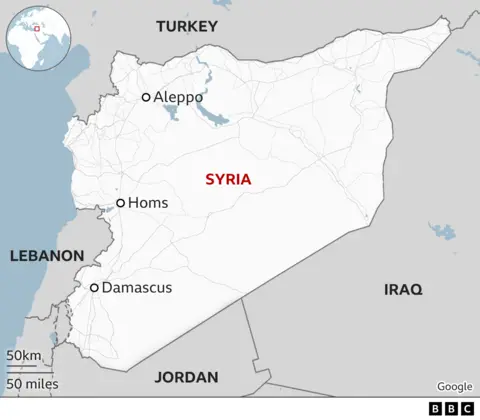
Turkey, Western powers and several Gulf Arab states have backed varying elements of the Syrian opposition to varying degrees during the conflict.
The Lebanon-based Hezbollah movement, backed by Iran, has fought alongside the Syrian regime army but has been severely weakened by its conflict with Israel.
Israel, concerned by what it calls Iran’s “military entrenchment” in Syria, has launched air strikes against Syria’s military.
How much territory have rebels gained?
After years locked behind frozen frontlines, the rebels have swept south from what was the last remaining territory under their control in Aleppo and Idlib provinces, which border Turkey, to mount the swiftest battlefield advance by either side in the civil war.
Hama lies a third of the way down the 330km (205 mile) road that links Aleppo and Damascus.
Its capture will hamper any swift attempt by Assad and his allies to launch a counteroffensive against rebel gains of the past week.
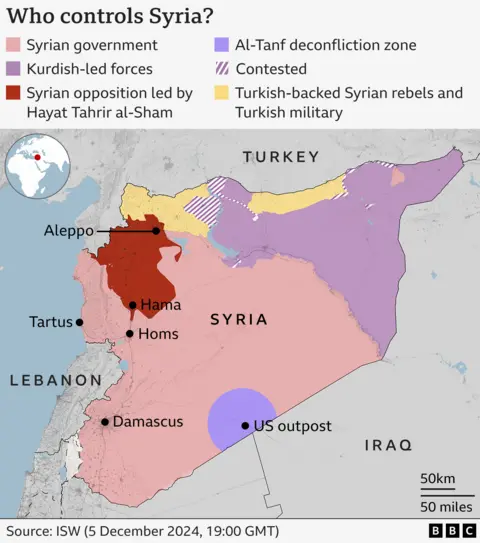
The arrival of rebel fighters in Hama came just over a week after the start of a sweeping offensive that has captured Aleppo and broken a years-long stalemate.
The insurgents had been fighting to reach Hama since Tuesday, to encircle the city from the north, east and west, where they clashed with the Syrian army.
Hama’s capture could clear a path for a further rebel push on the centrally-located crossroads of Homs and further southwards, including the capital Damascus.
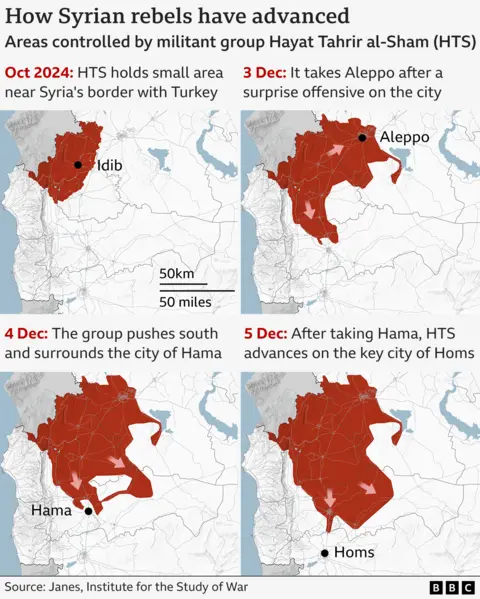
Where next for the rebels?
The insurgents have said they are ready to march on south towards Homs, a crossroads city that links the capital Damascus to the north and to the coast.
A rebel advance on Homs, 40 km (24 miles) south of Hama, could cut Damascus off from the coastal region, an area where Assad has support and where his Russian allies have a naval base and airbase in Latakia.
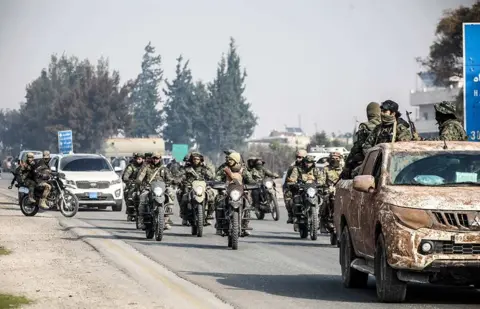 Getty Images
Getty ImagesThe rebels have been advancing along the key road which links Aleppo to Damascus, shown in the map below.
The road is hugely important to the rebels as it allows its fighters, who usually travel in convoys of small vehicles and motorbikes, to move easily and at speed to their next targets – and ultimately, Damascus itself.
Assad has vowed to “crush” the rebels and accused Western powers of trying to redraw the map of the region.
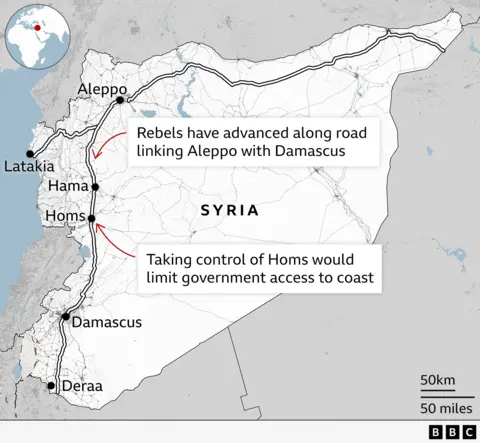


Leave a Reply